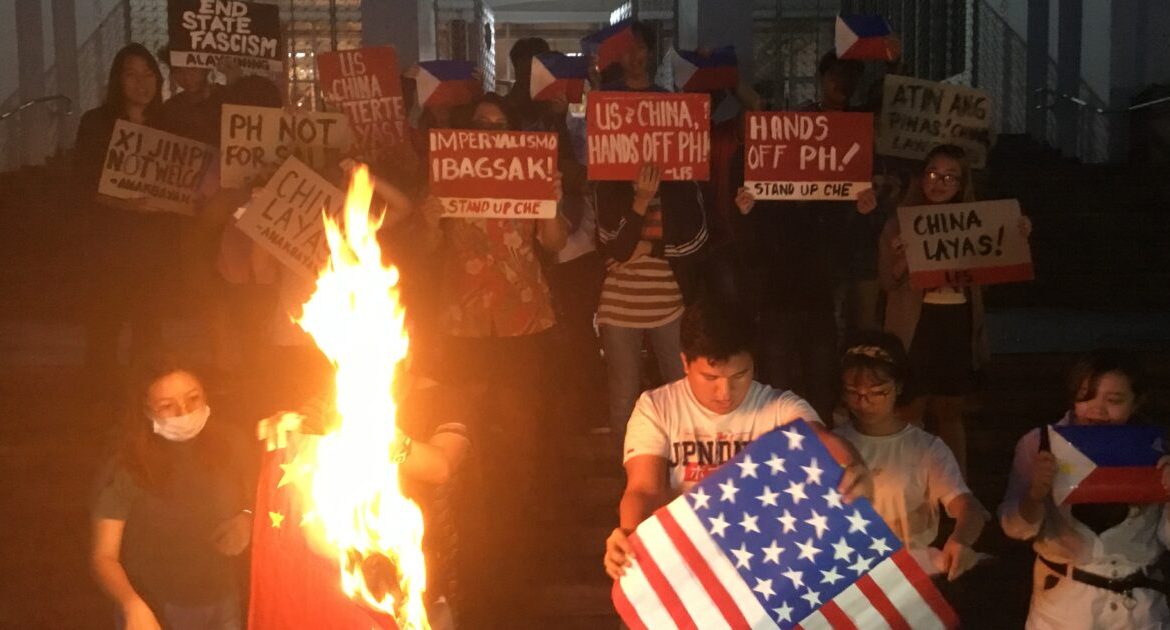

On July 24, 2024, pro-Palestinian protesters removed all three American flags from the flagpoles outside Union Station in Washington, D.C., replaced them with Palestinian flags, and burned at least one American flag alongside an effigy of Netanyahu. According to U.S. Park Police, two of the three flags taken down were burned by protesters.
That will never happen again, because President Trump has signed an executive order criminalizing the burning of the American flag. Just hours after the order was signed, a man was arrested near the White House for setting fire to a flag.
We win! We got our country back. Thank you, President Trump.
On August 25, 2025, President Trump issued an executive order directing federal agencies to prosecute acts of American flag desecration when such acts violate existing laws or incite violence. The order emphasizes the flag as a sacred national symbol of freedom and unity and notes that burning it is a provocative act that can incite unrest or be used by foreign nationals to threaten Americans.
Under the order, the Attorney General is instructed to prioritize enforcement of criminal and civil laws against flag desecration when linked to crimes such as violence, hate crimes, property destruction, or violations of civil rights.
Federal agencies are also directed to refer potential violations to state and local authorities under laws such as disorderly conduct, open burning restrictions, or property destruction statutes. The Department of Justice may pursue litigation to clarify the scope of First Amendment exceptions in this area.
Additionally, the order authorizes immigration penalties, allowing visas, residency, or naturalization to be denied or revoked, and permitting deportation of foreign nationals who desecrate the flag under applicable federal law. Standard severability and implementation provisions ensure the order remains effective even if portions are challenged.
Trump, in his executive order, urged Attorney General Pam Bondi to find a case that could challenge the Supreme Court’s ruling on flag burning. His order directly tests a landmark decision: the 1989 case Texas v. Johnson, in which the Court ruled 5-4 that burning the American flag is protected symbolic speech under the First Amendment. Justice William Brennan wrote the majority opinion, joined by Justices Anthony Kennedy, Thurgood Marshall, Harry Blackmun, and Antonin Scalia.
A man was arrested in Lafayette Park outside the White House on Monday evening after setting fire to an American flag, just hours after President Trump signed an executive order directing prosecutions for flag desecration. The U.S. Secret Service detained the individual around 6:15 p.m. and turned him over to the U.S. Park Police, which made the arrest for violating a regulation prohibiting open fires in public parks.
The man, who identified himself as a U.S. Army veteran with more than 20 years of service, said he was protesting Trump, calling him an “illegal fascist president,” and defended his actions as protected under the First Amendment. Trump’s new order instructs the Justice Department to pursue cases of flag desecration by citing state and local laws, and allows immigration penalties for foreign nationals involved in such acts.
In recent years, flag burning has increased in frequency, particularly during anti-Trump, anti-ICE, and pro-Hamas demonstrations. Examples include anti-Israel protests in Washington, D.C., in July 2024 during Prime Minister Netanyahu’s Congressional address; flag burning at the Democratic National Convention in Chicago in August 2024; and a July 4, 2024, protest in New York City’s Washington Square Park.
At Union Station in Washington, D.C., pro-Palestinian and pro-Hamas demonstrators removed American flags, hoisted Palestinian flags, and burned an American flag alongside an effigy of Netanyahu. Even Vice President Harris condemned “any individuals associating with the brutal terrorist organization Hamas” and “the burning of the American flag,” showing bipartisan opposition. More recently, in June 2025, anti-ICE protesters in Los Angeles were seen waving Mexican flags while burning American flags in response to federal immigration raids.
Over the years, numerous polls have measured American attitudes toward banning flag burning. While results vary depending on wording and timing, support for restrictions has consistently outweighed opposition. In 1989, Gallup found 71% in favor of a constitutional amendment allowing Congress to prohibit flag burning, though that number declined to around 62–63% in the 1990s. A 2006 USA Today/Gallup poll still showed 56% support.
More recent surveys reflect ongoing division: a 2020 YouGov poll found 49% thought flag burning should be illegal while 34% said it should be legal; a 2021 Knight Foundation/Ipsos poll showed only 31% agreed it should be allowed.
Republican support for restrictions remains strongest—67% back a constitutional amendment compared to 49% of Democrats. Similarly, 51% of Republicans support outright prohibition compared to 39% of Democrats, and 67% favor revoking citizenship for flag-burners, a position supported by only 29% of independents and about 25% of Democrats. Overall, two-thirds of conservatives favor a flag-burning amendment, nearly double the support among liberals at 35%.
The post Burn a Flag, Go to Prison, Get Deported: New Executive Order appeared first on The Gateway Pundit.

